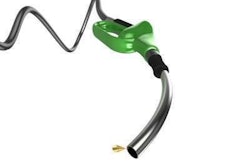Donaldson Co., a manufacturer of filtration systems and parts, announced Tuesday, Feb. 23, that Daimler Trucks North America has selected Donaldson PowerCore G2 air intake systems for their 2010 Freightliner Coronado family of heavy-duty trucks.
Donaldson says its PowerCore G2 filtration technology offers size reduction – 60 percent smaller than conventional cellulose filters and 30 percent smaller than Donaldson “original” PowerCore systems with geometric flexibility – to overcome the tight space constraints resulting from today’s complex emissions systems.
“With the advent of the new Coronado, we needed a technology for an underhood air intake system, flexible to our installation, and capable of meeting our design criteria for low restriction and superior life,” says Christopher Gedraitis, DTNA manager of air intake systems. “The improvements delivered in Donaldson’s PowerCore G2 product, specifically in size and overall dust capacity, were instrumental in our choosing this air intake system.”
Manufactured with Donaldson’s proprietary Ultra-Web advanced nanofiber technology, PowerCore G2 systems deliver three times more capacity and up to 10 times more efficiency – 99.97 percent – than conventional cellulose filters, according to the company; its customizable filtration performance features lower restriction and longer filter life in a smaller package.
“We have had a lot of success with the introduction of our PowerCore G2 air intake technology, both on-road and off-road, and we are extremely pleased to count a great long-standing customer like DTNA among those adopting it,” says Andrew Dahlgren, general manager of Air Products Business at Minneapolis-based Donaldson. “The new system meets the stringent requirements for EPA10 engines with the same straight-through airflow and high-density filtration as our ‘original’ PowerCore, while offering our customers greater design flexibility due to its significantly smaller footprint.”










